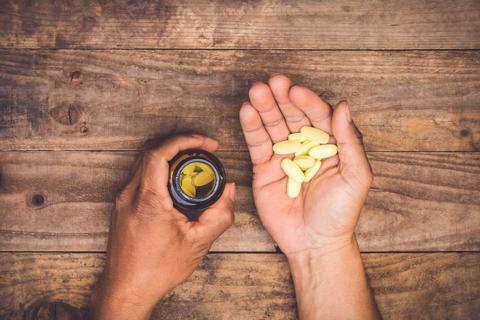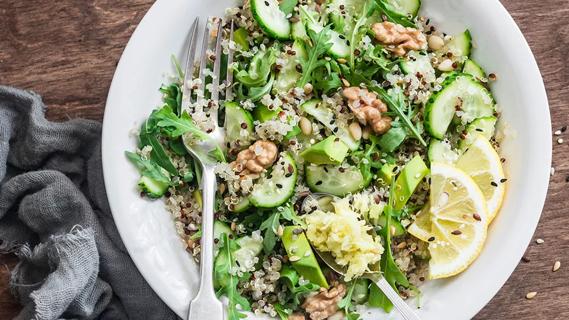Expert advice on different heart-friendly diets

Any diet changes for peripheral arterial disease (PAD) should reduce your intake of the types of fats associated with progression of cardiovascular disease. Ideally, these changes would also reduce inflammation in your blood vessels and in your entire body.
Advertisement
Cleveland Clinic is a non-profit academic medical center. Advertising on our site helps support our mission. We do not endorse non-Cleveland Clinic products or services. Policy
“Assessing what you can achieve with diet therapy is important because this is part of the types of lifestyle changes you can make to reduce your risk,” says registered dietitian Julia Zumpano.
Below are dietary recommendations based upon American Heart Association (AHA) guidelines. Also, a review of the research regarding the effects of changes in your diet and supplements for individuals with PAD.
Total dietary recommendations:
The total effects of these dietary changes should show reduction in your bad cholesterol and a reduction in your blood pressure.
A number of diets have been assessed by the AHA and the American College of Cardiology to determine their effectiveness. Specifically, the following diets have shown positive effects in preventing cardiovascular disease or decreasing progression of the disease.
Advertisement
This diet increases good cholesterol (HDL-C) better than low-fat diets and improves quality and length of life in those who adopt it. This diet primarily consists of high proportions of:
It also includes moderate to high amounts of fish, moderate amounts of dairy, such as cheese and yogurt, and wine. It calls for very limited amounts of meat and meat products.
Once again, the benefits of this diet have been proven in studies comparing this with standard diets. It’s a diet that’s often recommended if you have PAD, although it has not been directly compared in patients with PAD specifically.
This diet limits sodium and overall fat intake, and calls for avoidance of alcohol. There is very strong evidence this dietary modification is effective in reducing hypertension, cardiovascular disease risk and cardiovascular disease progression.
While not proven specifically in PAD patients, it’s clearly a diet that would help with the associated coronary artery disease. It’s a recommended diet for patients with PAD.
This diet can improve life quality and expectancy if you have cardiovascular disease. Once again, as with the other diets noted above, this diet has not specifically been compared exclusively in those with PAD.
“However, the overall benefits for cardiovascular disease in general make this a beneficial diet and one recommended for patients with PAD. This diet also benefits people with type 2 diabetes and obesity,” says Zumpano.
This diet — especially when added to a low-fat diet — can reduce triglycerides and increase good cholesterol levels, both of which can benefit patients with cardiovascular disease. These can also be recommended if you have PAD, and following this diet can result in reducing your overall cardiovascular risk.
All of these diets provide various benefits, Zumpano says. To choose a diet that is best for your specific needs, be sure to discuss with your doctor or a registered dietitian.
There are also a number of other diets that have been recommended that carry a particular physician’s name as the author. The Ornish Spectrum diet and the Weil anti-inflammatory diet along with the Esselstyn diet utilize some combination of plant-based, low-fat and low-carbohydrate diets along with limitations of protein intake from meats, eggs and dairy.
There is limited data to guide recommendations regarding these diets, but they do appear to provide benefit by incorporating principles behind proven diets. However, little can be said about proof of their specific benefits.
Advertisement
These diets use proven principles in the foods they recommend, and because the basics of these principles are proven to improve life quality and expectancy, the diets can be recommended if you have PAD.
However, these diets may prove much more challenging to adhere to than the others mentioned above, and there is limited clinical evidence they provide additional benefit.
Advertisement
Learn more about our editorial process.
Advertisement

Expert advice for people with peripheral arterial disease

When it comes to getting proper nutrition, your assigned sex can play a role — but there’s more to it than that

It has nutrients your body needs, but it also comes with some serious health risks

Despite what you may have heard, pork is actually red meat (and it comes with the same risks as other red meats)

Ground flaxseed is full of heart-healthy omega-3s, antioxidants and fiber, and easy to add to just about any recipe

From meat to beans, we’ve got some ideas to help you create the perfect-for-you chili recipe

Be sure to check the labels of common foods like canned tuna, bread, hot dogs and chocolate

A low-FODMAP elimination diet can help identify your symptoms

Type 2 diabetes isn’t inevitable with these dietary changes

Applying a hot or cold compress can help with pain